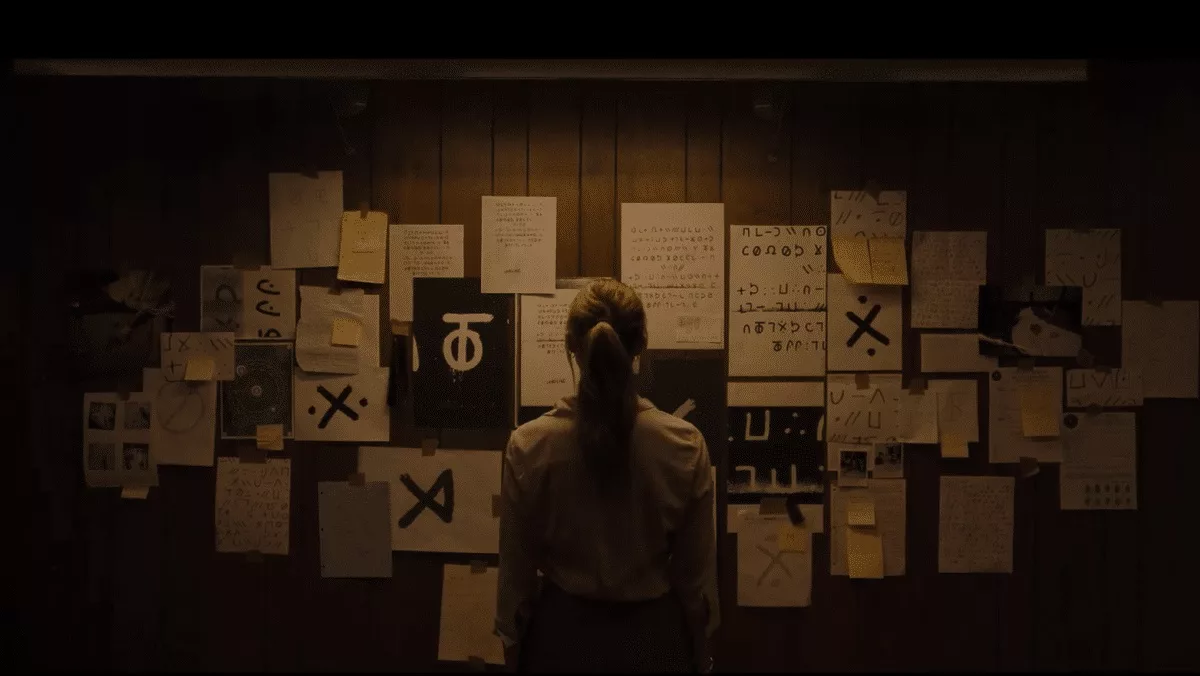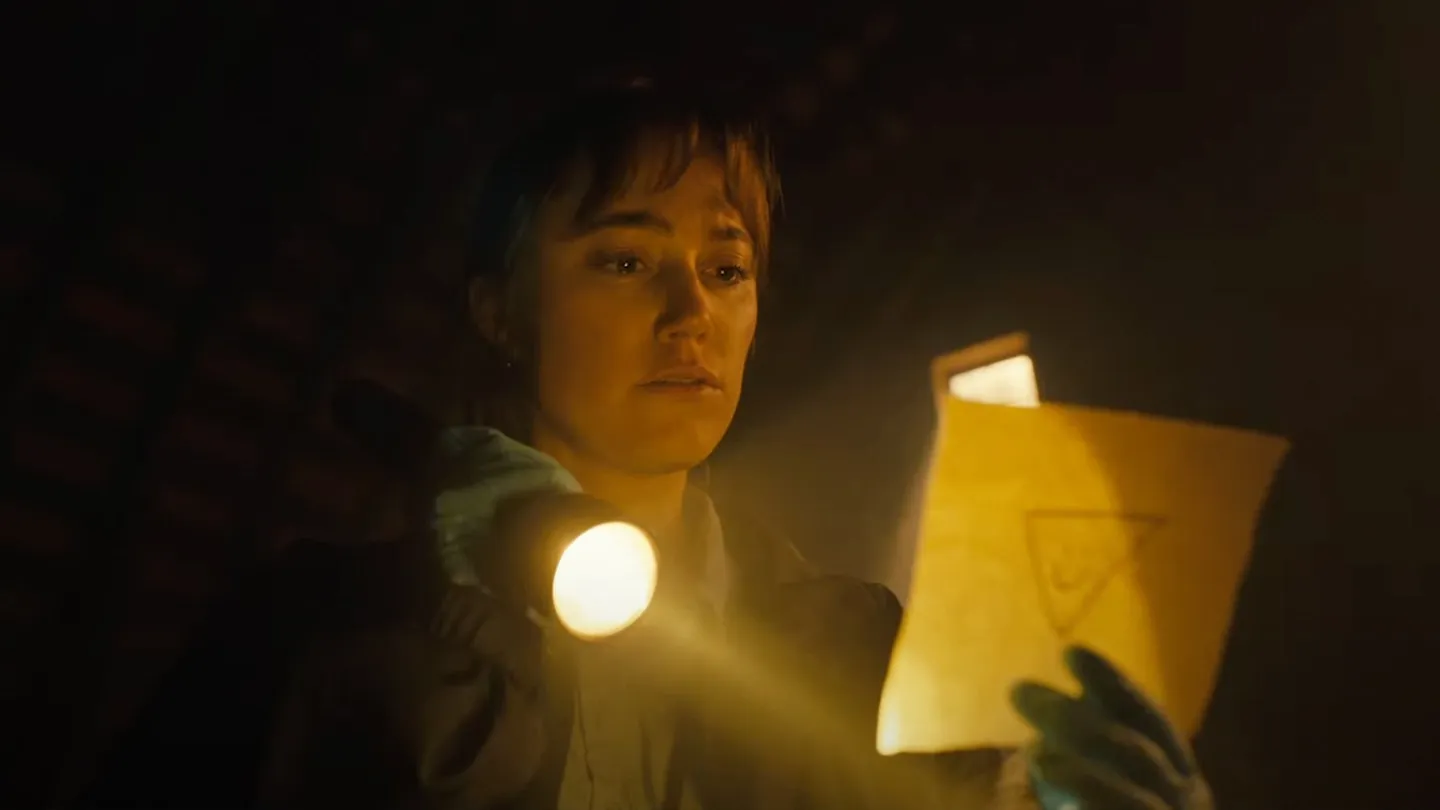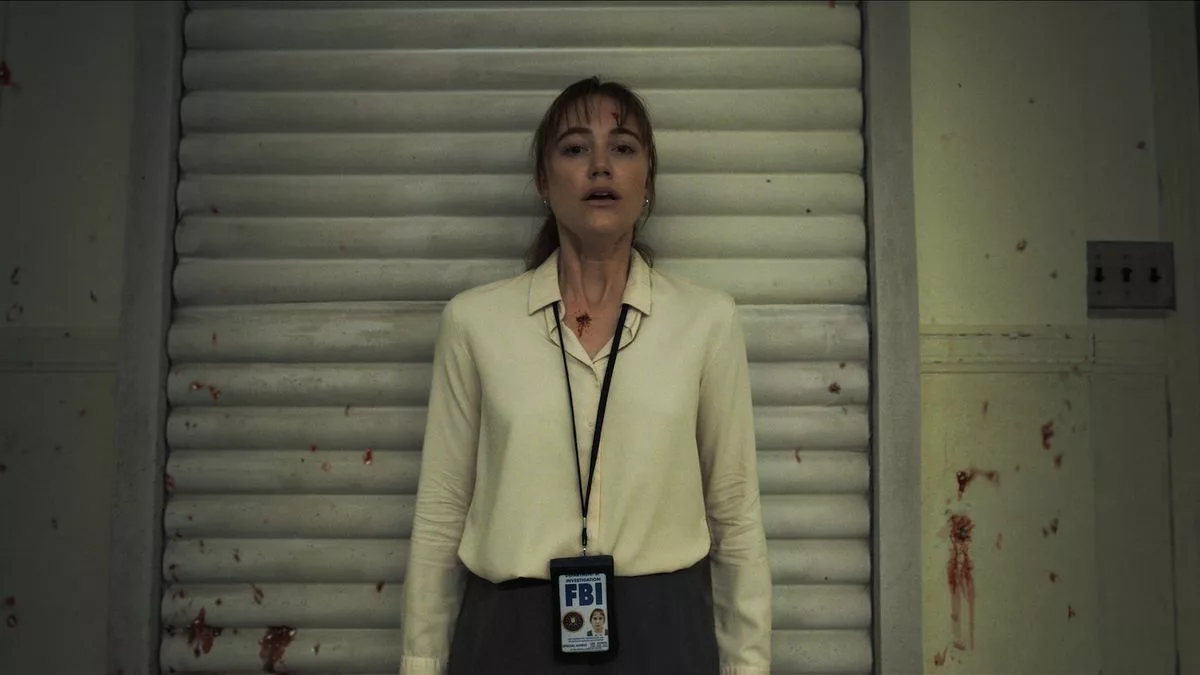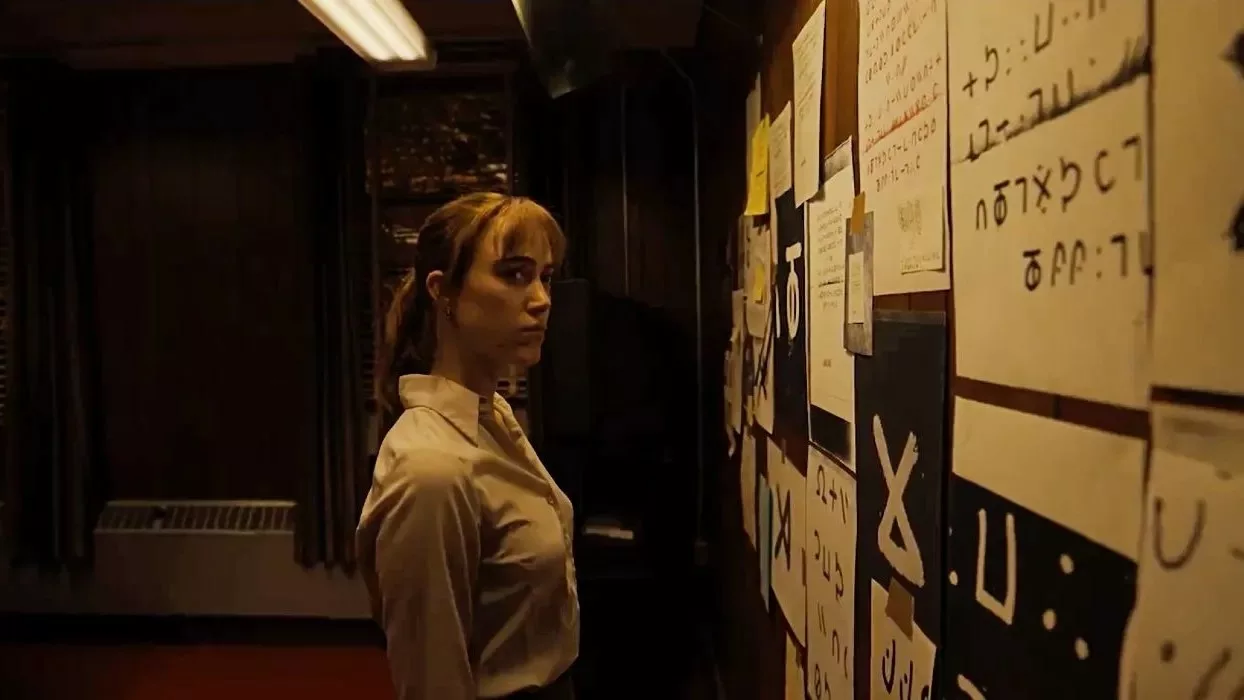Filmmaker Osgood Perkins has carved out a unique niche for himself, crafting slow-burn psychological thrillers that worm their way under your skin. In his latest and most ambitious film yet, Longlegs, Perkins demonstrates a masterful command of mood and atmosphere to immerse viewers in a nightmarish world of lingering evil.
The film follows young FBI agent Lee Harker, who finds herself drawn into the decades-old case of the elusive serial killer Longlegs. As Lee investigates a series of bizarre family murders, she starts to believe Longlegs may have a supernatural ability to influence his victims’ actions from afar. But this is just the beginning of the horrors Lee will uncover, as her pursuit of Longlegs gradually reveals there’s much more to his sinister crimes than meets the eye.
Perkins pulls from many classic horror traditions, blending unsettling true crime textures with palpably evil supernatural overtones. But it’s his keen directorial eye for disturbing, subtle details that makes this feel genuinely unnerving—like we’re glimpsing something we shouldn’t. Helped by outstanding performances from Maika Monroe and a disturbingly committed Nicolas Cage, Longlegs immerses its audience in a creeping sense of malevolent wrongness that lingers long after the end. Through his masterful command of tone and subtext, Perkins has crafted one of the most unshakeably disturbing psychological thrillers in recent memory.
Tales of Terror from Beyond
Longlegs tells a gripping story that draws inspiration from several genres while exploring profound themes. Perkins blends elements of serial killer thrillers, occult horror, and police procedurals to keep viewers constantly guessing. Even while paying homage to classics like Silence of the Lambs, he puts his own creative spin on proceedings.
A key theme is the nature of evil and how its influence manifests in the real world. Longlegs himself almost feels like an otherworldly being, committing horrific acts over decades yet leaving little evidence. His ability to manipulate people into killing seems supernaturally calculated. Viewers are left wondering: is he a human monster or something more sinister? This ambiguity is unsettling.
Another theme is the unknown and our fear of what lurks beyond comprehension. As Agent Harker digs deeper, more questions arise while answers remain elusive. Perkins deliberately withholds crucial details, crafting a shroud of mystery. We see through Harker’s eyes, sharing her anxiety as the case takes ever darker turns. Beyond the immediate killer, larger forces seem to be at play, hinting at deeper mysteries yet to be uncovered.
Harker’s psychic ability represents our inherent yet unreliable human intuition. She makes vital leaps in the case, relying on gut feelings. In one tense scene, her visions provide a critical clue. But are her abilities real, or merely a product of an overactive mind dealing with trauma? Perkins leaves this ambiguous too.
The plot was paced skillfully to build dread. Early forensic clues are unsettling, yet they don’t fully prepare viewers for the sheer depravity seen later. Strong performances and nuanced character development make this more than just a study in evil. Harker and Carter’s dynamic develops in interesting ways as new horrors are revealed.
Longlegs tells a truly chilling tale that gets under your skin and leaves lingering impressions long after viewing. Perkins masterfully cultivates an atmosphere of profound unease and questions about dark forces beyond rational explanation. Though the ending leaves some threads unfinished, overall this is an extremely effective psychological horror.
Achieving Cinematic Depth
The characters of Longlegs are a huge aspect of what makes this film so compelling. Agent Lee Harker and the enigmatic Longlegs are brought to life in profoundly unsettling ways through strong writing and masterful performances.
Maika Monroe fully embraces the nuances of Lee. She’s dedicated to her job yet struggles with personal demons, showing vulnerability beneath her professionalism. Monroe conveys Lee’s psychic intuition subtly through pensive eyes that soak in grim details. Her developing friendship with Carter feels authentic, with their mentorship grounding Lee during dark turns. Monroe also excels in Lee’s most intense scenes, particularly with Longlegs; her terror is palpable.
This leads to Nicolas Cage’s tour de force as Longlegs. He instills the character with an utter lack of humanity, like a sinister force of nature. Cage manipulates his vocals into a hauntingly croaky delivery, while his seemingly effortless physicality makes Longlegs glide with inhuman poise. His unblinking stare cuts right through the viewer, establishing Longlegs as the stuff of nightmares. Their climactic confrontation is a masterclass in psychological horror.
Alicia Witt also gives nuanced layers to Lee’s mother, Ruth. Though overbearing in her faith, Witt ensures you understand Ruth’s care for her daughter amongst the severe mental cracks showing through. Her scenes offer a window into Lee’s painful past and the family’s fragile bond, which Longlegs exploits.
Relationships are key to driving the plot as an investigative thriller. Harker and Carter’s rapport creates two sides of a coin: one dedicated but haunted, the other wise yet restrained. Underwood taps into Carter’s patience and care for his employees, forming the foundation for Lee to lean on.
Longlegs also evolves into a profound character study of evil’s far-reaching effects. Through insightful writing and top-tier performances, these characters plunge the viewer into a vivid, unsettling world where darkness manifests in the light and the origins of evil remain a mystery. It’s a testament to Perkins and the cast that this story has lingered with me long after viewing it.
Capturing Evil on Film
Perkins’ deliberate stylistic choices play a huge role in Longlegs’ relentless dread. Andres Arochi’s cinematography is downright suffocating, cloaking scenes in shadowy gloom. Tight framings keep urgency high, while zooms amplify unease during tense moments. He films many scenes like haunted paintings come to life, each composition dripping with menace.
Lighting is sparse and source-based, mimicking flickering candles more than hard studio rigs. This adds an eerie realism, as if we’ve slipped into Longlegs’ nightmarish reality. Subtle reds and browns create a vintage, nighttime vibe throughout. During especially disturbing sequences, flashes of crimson and inky blackness accentuate the mounting terror.
Perkins pairs these visuals with an equally unsettling sound. An ominous score plays out as ominous whispers, intensifying the mystery. Meanwhile, unnerving production details bring scenes to life—creaking floorboards, rustling wind, screaming cicadas. These elemental textures ground the horror in our world.
Danny Vermette’s production design completes the unsettling atmosphere. Lee’s isolated woodland home screams vulnerability, while Longlegs’ dilapidated farmhouse oozes forgotten menace. Both feel plucked from history, relics cloaked in a patina of decay. Autopsy rooms and interrogation spaces take on sterile coldness, intensifying claustrophobia.
Costuming, too, plays a role. Longlegs’ ghostly white attire contrasts with nightmarish scarlet details, transforming him into a creeping specter. Meanwhile, Lee’s worn plaid shirts and slacks blend professionalism with self-effacement, emphasizing her frazzled mental state. Together, these aesthetic touches immerse us in Longlegs’ dark, tactile universe.
Through visual storytelling that seduces as much as it shocks, Perkins weaves a diabolical spell with Longlegs. Every technique ratchets dread toward the colossal unease of its phenomenal climax. It’s a masterclass in building terror through atmosphere, showing why some fears transcend reason itself.
Stepping into the Twilight Zone
Osgood Perkins crafts an eerie atmosphere in Longlegs, but it’s the performances that truly bring this twisted world to life. Maika Monroe flexes her skills as the grounded yet gifted Agent Lee Harker. Living with a foot in both crime reality and psychic mystery leaves Lee fitting oddly into either world. Monroe captures that unsettled air through subtle expressions and cautious movement. Yet beneath the discomfort, her focus and bravery shine through.
Then there’s Blair Underwood as Agent Carter. He provides a steadying influence as Lee’s mentor, seeing her potential where others see only unease. Underwood lends Carter warmth without losing any stern authority. His scenes with Monroe feel like a senior partner prepping a talented newcomer for her strangest case yet. They make an excellent duo to guide viewers into this shadowland.
Of course, Nicolas Cage as the enigmatic Longlegs is sure to elicit nightmares. He disappears so fully into the role that it’s hard to see the man beneath the monster. With an otherworldly voice and stop-start manner, Longlegs seems less like a mere serial killer than a creature from the Twilight Zone. He exudes an aura of wrongness that chills to the bone.
Alicia Witt also deserves praise for her disturbing turn as Lee’s mother. Underneath worry and care lies something darker, though what exactly eludes full understanding. Witt lets that unease simmer until her scenes crackle with irrational tension. She completes the sense that this drama erupts on deeply unbalanced grounds.
Together, this cast injects this twist on a crime thriller with unnatural energy. They breathe life into complex, imperfect characters, straddling rationality and shadows. Even as the plot thickens and raises more cosmic questions, their anchorless but heartfelt performances keep viewers tethered to the land of the living, even while peeking at what gnaws below.
Longlegs Lingers Long After
Osgood Perkins has delivered something truly terrifying with Longlegs. Make it clear that this film gets under your skin and doesn’t let go. It immerses viewers in a deep sense of dread through haunting atmospherics and nightmare-inducing imagery.
Maika Monroe and Nicolas Cage are praised for their intense performances at the core of this disturbing story. Monroe grounds the film as the troubled yet determined Agent Lee Harker. And Cage creates an unforgettable villain as the enigmatic Longlegs, a deranged force that impacts everyone he encounters.
Perkins tight direction keeps audiences unbalanced throughout. He constructs an unsettling dream logic that feels like a waking nightmare. While not an easy watch, fans of psychologically twisting horror seem to agree that Longlegs will reward those wanting a truly unnerving scare that stays with them.
In the end, Longlegs makes its mark as a masterclass of unease. It’ll linger long after in viewers’ minds as one of the most disturbing cinematic experiences in recent memory. Those willing to immerse themselves in such an unsettling nightmare won’t want to miss this haunting film from Osgood Perkins.
The Review
Longlegs
Osgood Perkins has once again proven himself a master of unease with Longlegs. Marrying unnerving supernatural intrigue with a gripping serial killer procedural, this film burrows deep under the skin with its pervading sense of dread. Maika Monroe and Nicolas Cage give tour-de-force performances at the center of this disturbing psychological thriller. Perkins' unflinching direction, coupled with the grimy authenticity of the production, fully immerses viewers in its nightmarish realities.
PROS
- Terrifying atmosphere and tone
- Riveting performances from Maika Monroe and Nicolas Cage
- Intelligent blending of genres and influences pays homage while feeling fresh.
- A gripping storyline keeps viewers engaged and guessing.
- Impeccably technical elements heighten the unnerving impact.
CONS
- Dense, slow-burn styles won't appeal to all audiences.
- Some may find the content too disturbing or dark.
- Occasional narrative gaps require close attention.




















































